FROM all the building going on in Sydney and Melbourne, one gets the clear impression as far as real estate development is concerned, good money is being made. Yet unlike what too often happens in the States, private profit appears not to come at the expense of an investment in the shared social spaces that are somewhat loftily (and too inchoately) called a city’s public realm. (For an instructive and dispiriting contrast to what we found in Australia, read this, on the ongoing disintegration of New York City’s subway system.) Here, it seems, it’s not one or the other, but both. Public and private. Everybody wins.
The plenitude and variety of welcoming open spaces in Sydney and Melbourne’s newer (or newish) developments suggest that those in charge of urbanism operate with both a robust commitment and sufficient resources to ensure that cities offer pedestrian amblers-around many opportunities to choose from, on and off the street, to meet a friend or just take a midday pause. Places where strangers graze elbows without stepping on one another’s toes.
Architecturally, some are distinctive, others not. Melbourne’s Federation Square, below (completed ca. 2003), epitomizes the complexity of this relationship between urbanism and architecture — and now, it’s become the focus of this never-ending discussion about balancing private and public space, as Apple proposes demolishing one of its buildings to erect a new retail store (read about that here).  Comprised of a series of buildings, each a slightly different but equally horrible bastardization of some also-horrible Daniel Liebeskind-ish idea (he was on the jury that chose the principal designers), Federation Square nevertheless contains many deep pockets of agreeable urbanity, woven into the eye-smarting silliness of its architecture.
Comprised of a series of buildings, each a slightly different but equally horrible bastardization of some also-horrible Daniel Liebeskind-ish idea (he was on the jury that chose the principal designers), Federation Square nevertheless contains many deep pockets of agreeable urbanity, woven into the eye-smarting silliness of its architecture.
Tourists, by definition peripatetic, will find the complex difficult to avoid. Each day and time we found ourselves in Federation Square, its low-slung and high-rising steps and sitting areas, its recessed spatial eddies and quarkily-configured common spaces, teemed with riots of people, color, and activity. Amphitheater-like steps offer up seating areas for school kids eating lunch, mothers on outing with toddlers in strollers, all manner of passers-by and lingerers.  In front of the Christmas tree, we spotted a woman swathed in hajib posing with her daughter for a picture. Later, discussing the ways Australia’s changed in the past two decades, a remarkably voluble Uber driver — who once worked as an advocate for occupational health and safety in the mining industry — told us that the country’s welcoming immigration policies has created a far more tolerant, open society than the one in which he was raised.
In front of the Christmas tree, we spotted a woman swathed in hajib posing with her daughter for a picture. Later, discussing the ways Australia’s changed in the past two decades, a remarkably voluble Uber driver — who once worked as an advocate for occupational health and safety in the mining industry — told us that the country’s welcoming immigration policies has created a far more tolerant, open society than the one in which he was raised.
Compositionally, the Federation Square complex offers up nice moments, here and there. Such as this one, on a staircase tucked off the busy, main thoroughfare, where a maintenance worker on break set her blue knapsack down and started in on checking her cell phone, not even bothering to remove her latex gloves.
Among the urbanistically-preoccupied, the best known urban project in Australia, besides Sydney’s Opera House, remains Jan Gehl Associates’ transformation of Melbourne’s Central Business District from a litter-strewn, post-5pm-and-weekend urban graveyard into a vibrant, crowded, see-and-be-seen, free-for-all (I seem to be on some kind of adjectival run) place of urban congregation.  The most clever thing Gehl did was to link together a series of unprepossessing back alleys and reconfigure their street-level frontage to admit teeny-tiny storefronts, just the right size to create arrays of specialized restaurants and shops.
The most clever thing Gehl did was to link together a series of unprepossessing back alleys and reconfigure their street-level frontage to admit teeny-tiny storefronts, just the right size to create arrays of specialized restaurants and shops.  These new open-air pedestrian malls were threaded into the pathways of two preexisting historic shopping arcades; this one, below, even more exquisite than the photo conveys, opened in 1870.
These new open-air pedestrian malls were threaded into the pathways of two preexisting historic shopping arcades; this one, below, even more exquisite than the photo conveys, opened in 1870.

Royal Arcade, Melbourne
As Danny and I traversed the entire loop, courtesy of a map obtained from the tourist information bureau, I idly mused whether it might be possible to spend all the money earned in a month in a single afternoon walk. Restaurants, art galleries (including one selling what its proprietors claimed were original drawings by Dr. Seuss), clothing and jewelry and hand-mixed cosmetic stores. Certainly the retinue of shopkeepers and restauranteurs milling around, expectantly, held out hope that wallets would empty, and empty again. Ours didn’t, but we enjoyed the show.
Sydney’s Central Business District retains more of its Victorian-era architecture; the newer developments we sought out lie in neighborhoods at a remove from the city’s neverending, serpentine shoreline. In Chippendale, not far from the University of Technology Sydney campus, we were stopped short in our tracks by the sight of this spectacular, justly celebrated high-rise by Jean Nouvel, designed in collaboration with Foster & Partners and Patric Blanc, the French botanist who invented the green wall. Pretentiously, audaciously named One Central Park (the developer’s promotional materials represent it, fatuously, as a vertical version of New York City’s emerald gem), it’s a luxury residential-cum-retail complex defining one edge of a block-sized green, something between a plaza and a park. The day we visited, the plaza-park bubbled with shoppers en route to the supermarket, construction workers on lunch break, seeking shade. The attractive multilevel retail complex encircles a green-walled atrium filled with cascading natural light, and spinning around the void was a blur of parcels leading their human owners hither and yon. How did the architects manage to project natural light so deep into a multistory, partially underground atrium? That large shimmering cantilever projecting off the façade: it’s a metal grid hung with mirrors programmed to follow the rays of the sun, directing and redirecting them into the atrium below.

Streetside, the building’s green facades project a soft-edged, appealing presence, and Blanc made sure that all the plants are native to Australia.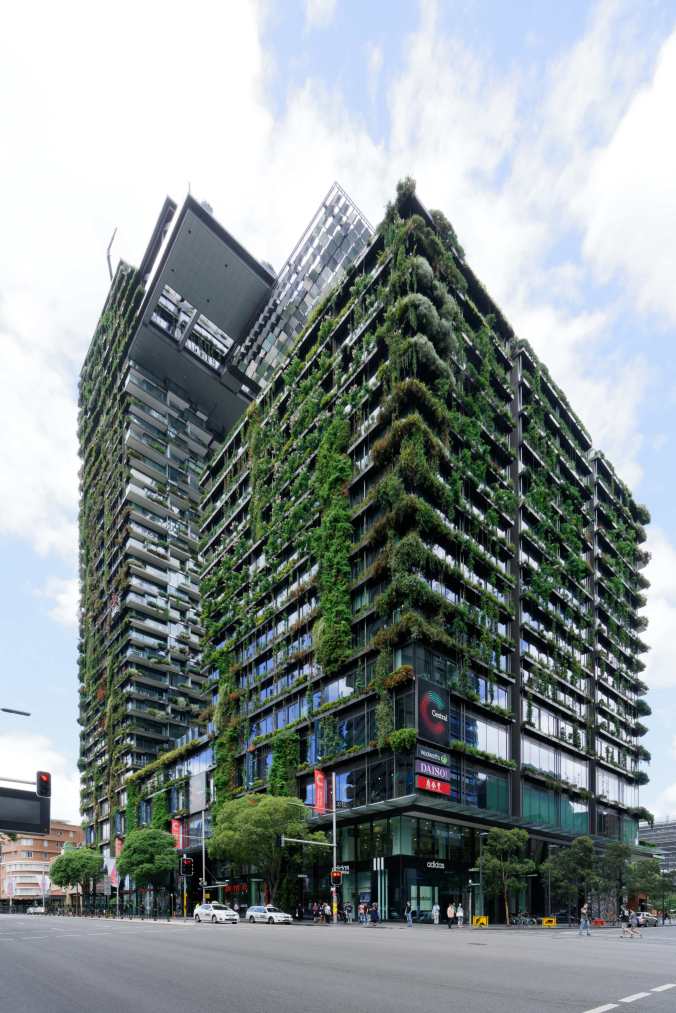
We continue to pursue green, especially in cities, even with New Zealand long behind us. Neither Sydney nor Melbourne disappointed. Foremost among the urban pastorals is landscape architect Peter Walker’s newly opened Barangaroo Reserve Park. Stunning.

10,000 blocks of rich, creamy sandstone create a graduated, semi-permeable shoreline edge (professionals call this riprap) that helps to mitigate flooding; Walker, recognizing the stone’s beauty, made it the design datum for the park, using it for much else, too.

Sitting stones (left).

Benches, parapets, stairs, terracing.

The Barangaroo Reserve opened only recently. The day we visited it was practically empty, but that’s because it’s currently pretty inaccessible, surrounded by a busy thoroughfare and a huge construction site. Soon enough, I predict, it will earn its rightful place as a treasured part of Sydney’s urban fabric. You can read more about it here.
Finally, the magical Botanic Gardens in both cities.

Just one prospect of the Royal Botanic Gardens in Melbourne.

This also displays astonishing set pieces in the form of weird, wonderful trees.
 A stubby, fat palm that defiantly sat in our path.
A stubby, fat palm that defiantly sat in our path.  A gossamer, red-berried wonder that you spied only if you looked straight up.
A gossamer, red-berried wonder that you spied only if you looked straight up.
 One with gnarly-fingered branches encased in bark so deeply incised that half your hand would fit into each of its grooves.
One with gnarly-fingered branches encased in bark so deeply incised that half your hand would fit into each of its grooves.  And one tree that reminded me of Edward Weston’s wonderful green pepper photographs, or, for a more recent reference, of Del Kathryn Barton’s exuberantly multi-breasted women.
And one tree that reminded me of Edward Weston’s wonderful green pepper photographs, or, for a more recent reference, of Del Kathryn Barton’s exuberantly multi-breasted women.
All in all, Australians seem to appreciate the wonders of their cityscapes and their landscapes. More than once, we found its soft surfaces celebrated in the hard ones.

The country’s two principal cities make a good exemplar for urban livability, one that other cities and countries might take a good, long look at– and take heed.
— Sarah














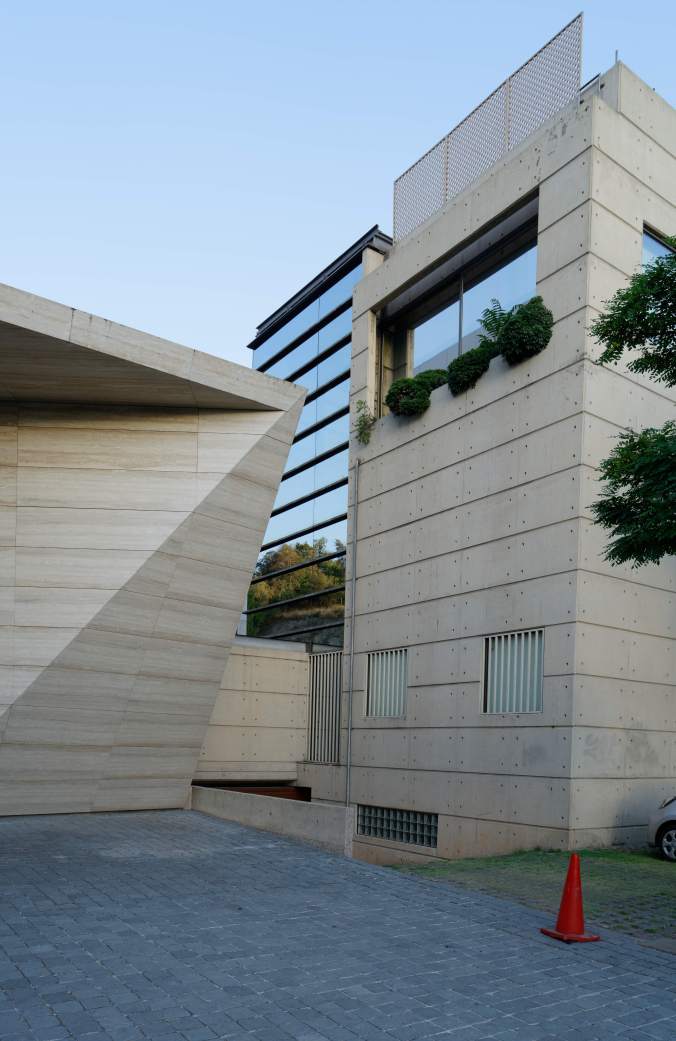















 But every part of the city that we saw – even the poorer, more downtrodden neighborhoods– bore the character of an invitation. Walk here. Look at this sculpture, this fountain.
But every part of the city that we saw – even the poorer, more downtrodden neighborhoods– bore the character of an invitation. Walk here. Look at this sculpture, this fountain.

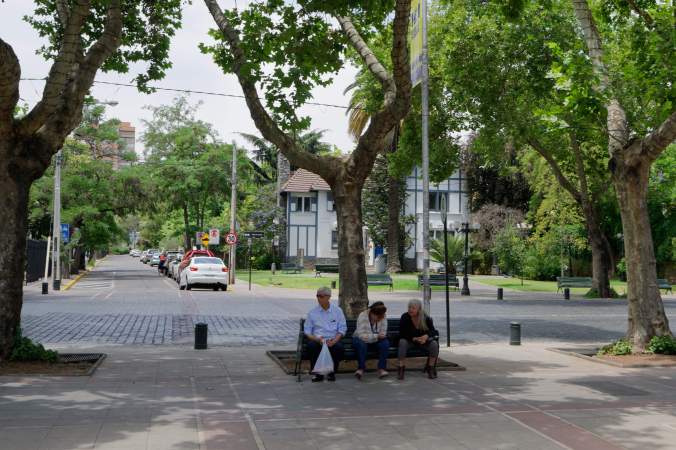 Slow down. Perhaps an espresso in an outdoor café?
Slow down. Perhaps an espresso in an outdoor café?
 Like so many Latin cities, Santiago’s urban fabric and streetscapes were designed with strong bones, the scaffolding of a robust, unending public life.
Like so many Latin cities, Santiago’s urban fabric and streetscapes were designed with strong bones, the scaffolding of a robust, unending public life.  What did these streets look like during the Pinochet regime, I wondered? As we explored the city, I couldn’t but imaginatively replace what we were enjoying with scenes from the last part of Isabelle Allende’s House of the Spirits, when terrorized aristocrats hid behind lace curtains while learning of disappeared friends and acquaintances. What did Santiago feel and look like then?
What did these streets look like during the Pinochet regime, I wondered? As we explored the city, I couldn’t but imaginatively replace what we were enjoying with scenes from the last part of Isabelle Allende’s House of the Spirits, when terrorized aristocrats hid behind lace curtains while learning of disappeared friends and acquaintances. What did Santiago feel and look like then?
 a busy two-way street corralling cars onto a different highway, this one headed north toward the airport; and the Gran Torre Santiago, a 64-story tower designed by Cesar Pelli, the tallest building in South America.
a busy two-way street corralling cars onto a different highway, this one headed north toward the airport; and the Gran Torre Santiago, a 64-story tower designed by Cesar Pelli, the tallest building in South America.  Oh, also: between us and Pelli, the heavily banked, mud-filled, brackishly yellow Mapocho river gushed and rushed, its elevated banks lined with strips of parkland.
Oh, also: between us and Pelli, the heavily banked, mud-filled, brackishly yellow Mapocho river gushed and rushed, its elevated banks lined with strips of parkland.
 But at street level, the Gran Torre crashed into la Costanera, South America’s largest, monstrous, indoor shopping mall. Anyway the Pelli tower proved a convenient landmark, forfending all manner of navigational ruptures, and marking the transition from Providencia’s mid-rise apartment blocks to the beginning of Santiago’s newer business district, to the northeast of the city’s historic center.
But at street level, the Gran Torre crashed into la Costanera, South America’s largest, monstrous, indoor shopping mall. Anyway the Pelli tower proved a convenient landmark, forfending all manner of navigational ruptures, and marking the transition from Providencia’s mid-rise apartment blocks to the beginning of Santiago’s newer business district, to the northeast of the city’s historic center.
 The architect-owner (coincidence? Not likely), Mabel, had meticulously restored the exterior
The architect-owner (coincidence? Not likely), Mabel, had meticulously restored the exterior  and carved the vast interior into three loft-ish apartments which she kept nearly continuously occupied through Airbnb.
and carved the vast interior into three loft-ish apartments which she kept nearly continuously occupied through Airbnb.



 A “centrally located, luxury alternative” to Santiago’s expensive hotels.
A “centrally located, luxury alternative” to Santiago’s expensive hotels. Even when her design taste veered toward over-the-top-Latina,
Even when her design taste veered toward over-the-top-Latina,  Mabel’s gesamtkunstwerk was gratifyingly distinctive in the way that three-to-four-star chain hotel rooms and hotels never, ever are. She had brightened up the dark interior by cutting in a double-height window in the back and lofting the second story bedroom area over the first. Some of the art hung inside was better than decent, too.
Mabel’s gesamtkunstwerk was gratifyingly distinctive in the way that three-to-four-star chain hotel rooms and hotels never, ever are. She had brightened up the dark interior by cutting in a double-height window in the back and lofting the second story bedroom area over the first. Some of the art hung inside was better than decent, too.



 we nabbed the restaurant’s one free sidewalk table. It was a two person, small, square, wood-topped pedestal, separated from its neighbor to the side by just enough inches for us to feel we were at a private table, but not too many inches as not to afford natural-feeling, inter-table conversation.
we nabbed the restaurant’s one free sidewalk table. It was a two person, small, square, wood-topped pedestal, separated from its neighbor to the side by just enough inches for us to feel we were at a private table, but not too many inches as not to afford natural-feeling, inter-table conversation.  A kind of perfect placement, if conversational options are your eating-taste. Friendly, as we are, we struck up a conversation with our neighbor, which he actually initiated more than we did, which lasted an hour-and-a-half or more of our leisurely lunch of one-course plus coffee. Travelers, it should be a truism, are more likely to converse with strangers than non-travelers are. After all, travelers are underway for adventure and newness and discovery, and their world of available family and friends and colleagues and acquaintances has radically shrunk, so what better way to seek out the new and to fill in the social void than by talking with people seated nearby in cafes, particularly when they turn out also to be travelers and therefore of a similar conversational positioning?
A kind of perfect placement, if conversational options are your eating-taste. Friendly, as we are, we struck up a conversation with our neighbor, which he actually initiated more than we did, which lasted an hour-and-a-half or more of our leisurely lunch of one-course plus coffee. Travelers, it should be a truism, are more likely to converse with strangers than non-travelers are. After all, travelers are underway for adventure and newness and discovery, and their world of available family and friends and colleagues and acquaintances has radically shrunk, so what better way to seek out the new and to fill in the social void than by talking with people seated nearby in cafes, particularly when they turn out also to be travelers and therefore of a similar conversational positioning? We learned a bunch about his business and saw cell phone photos of the recently unveiled super-first-class 70th anniversary cabins on Singapore Airlines, the production of which (if I understood correctly) he oversaw. We told him that the Boeing 787, called Dreamliner, has, with its better air, quieter interior, expanded overhead clearance, and improved lighting, made our travels notably more pleasant. Beyond the what-do-you-do conversations, which were more extensive and substantive than is usual in such casual encounters, our good-natured exchanges included Iran, as Ash is of Iranian descent, the UK, Brexit, world order, high-tech education, Israel, Jerusalem, and, all but unavoidably, Trump. He told us that he can’t go to the US as he’s subject to the US travel ban. This is so even though he’s a UK citizen and even though he’s through-and-through British, as he was born there. Because he holds dual nationality with Iran, he’s Verboten-fruit.
We learned a bunch about his business and saw cell phone photos of the recently unveiled super-first-class 70th anniversary cabins on Singapore Airlines, the production of which (if I understood correctly) he oversaw. We told him that the Boeing 787, called Dreamliner, has, with its better air, quieter interior, expanded overhead clearance, and improved lighting, made our travels notably more pleasant. Beyond the what-do-you-do conversations, which were more extensive and substantive than is usual in such casual encounters, our good-natured exchanges included Iran, as Ash is of Iranian descent, the UK, Brexit, world order, high-tech education, Israel, Jerusalem, and, all but unavoidably, Trump. He told us that he can’t go to the US as he’s subject to the US travel ban. This is so even though he’s a UK citizen and even though he’s through-and-through British, as he was born there. Because he holds dual nationality with Iran, he’s Verboten-fruit. Comprised of a series of buildings, each a slightly different but equally horrible bastardization of some also-horrible Daniel Liebeskind-ish idea (he was on the jury that chose the principal designers), Federation Square nevertheless contains many deep pockets of agreeable urbanity, woven into the eye-smarting silliness of its architecture.
Comprised of a series of buildings, each a slightly different but equally horrible bastardization of some also-horrible Daniel Liebeskind-ish idea (he was on the jury that chose the principal designers), Federation Square nevertheless contains many deep pockets of agreeable urbanity, woven into the eye-smarting silliness of its architecture. In front of the Christmas tree, we spotted a woman swathed in hajib posing with her daughter for a picture. Later, discussing the ways Australia’s changed in the past two decades, a remarkably voluble Uber driver — who once worked as an advocate for occupational health and safety in the mining industry — told us that the country’s welcoming immigration policies has created a far more tolerant, open society than the one in which he was raised.
In front of the Christmas tree, we spotted a woman swathed in hajib posing with her daughter for a picture. Later, discussing the ways Australia’s changed in the past two decades, a remarkably voluble Uber driver — who once worked as an advocate for occupational health and safety in the mining industry — told us that the country’s welcoming immigration policies has created a far more tolerant, open society than the one in which he was raised.
 The most clever thing Gehl did was to link together a series of unprepossessing back alleys and reconfigure their street-level frontage to admit teeny-tiny storefronts, just the right size to create arrays of specialized restaurants and shops.
The most clever thing Gehl did was to link together a series of unprepossessing back alleys and reconfigure their street-level frontage to admit teeny-tiny storefronts, just the right size to create arrays of specialized restaurants and shops.  These new open-air pedestrian malls were threaded into the pathways of two preexisting historic shopping arcades; this one, below, even more exquisite than the photo conveys, opened in 1870.
These new open-air pedestrian malls were threaded into the pathways of two preexisting historic shopping arcades; this one, below, even more exquisite than the photo conveys, opened in 1870.









 A stubby, fat palm that defiantly sat in our path.
A stubby, fat palm that defiantly sat in our path.  A gossamer, red-berried wonder that you spied only if you looked straight up.
A gossamer, red-berried wonder that you spied only if you looked straight up. One with gnarly-fingered branches encased in bark so deeply incised that half your hand would fit into each of its grooves.
One with gnarly-fingered branches encased in bark so deeply incised that half your hand would fit into each of its grooves. 






 The recessed light well, at right, broke up the linearity of the main living area and admitted all manner of light and weather, including the torrential rains with which we were greeted –four seasons in a day, Uber drivers told us again and again, pontificating about the city’s fickle weather. Anyway, our little Middle Park abode proved a hospitable place to enjoy even the downpours, presenting them artfully, at a slight remove.
The recessed light well, at right, broke up the linearity of the main living area and admitted all manner of light and weather, including the torrential rains with which we were greeted –four seasons in a day, Uber drivers told us again and again, pontificating about the city’s fickle weather. Anyway, our little Middle Park abode proved a hospitable place to enjoy even the downpours, presenting them artfully, at a slight remove. Scattered hillocks of towers, residential and commercial, pop up from the lilyponds of two-to-four story mixed-use buildings which spread in nearly every direction, all the way to the horizon.
Scattered hillocks of towers, residential and commercial, pop up from the lilyponds of two-to-four story mixed-use buildings which spread in nearly every direction, all the way to the horizon. In commerical and higher-density residential neighborhoods, the taller structures indicate that Melbourne, like Sydney, takes its towers seriously.
In commerical and higher-density residential neighborhoods, the taller structures indicate that Melbourne, like Sydney, takes its towers seriously.

 I tried to discover statistics on new residential and office space real estate, but curiosity vanished in the deluge of Google hits beckoning me to bankers’ and developers’ websites, so I’ll just go with the information offered by Meaghan Dwyer of John Wardle Architects: in both cities, there’s a lot of building going on.
I tried to discover statistics on new residential and office space real estate, but curiosity vanished in the deluge of Google hits beckoning me to bankers’ and developers’ websites, so I’ll just go with the information offered by Meaghan Dwyer of John Wardle Architects: in both cities, there’s a lot of building going on.

 and others masonry. A few of these areas snuggle up to, or surround a little open area akin to a village green– below, look how some kid just dropped her bicycle and walked in her front door with no thought of locks or bike stands. Just as we all used to do, growing up. Right in the middle of Sydney!
and others masonry. A few of these areas snuggle up to, or surround a little open area akin to a village green– below, look how some kid just dropped her bicycle and walked in her front door with no thought of locks or bike stands. Just as we all used to do, growing up. Right in the middle of Sydney! Nearby stood larger buildings that served the original community — perhaps a library, a school, a church. What the building below was or now is remains a mystery, but it’s fairly typical of the small Victorian public infrastructure in both Sydney and Melbourne.
Nearby stood larger buildings that served the original community — perhaps a library, a school, a church. What the building below was or now is remains a mystery, but it’s fairly typical of the small Victorian public infrastructure in both Sydney and Melbourne.


 That red-brick/yellow-ochre detailing is a common combination in public buildings in both cities.
That red-brick/yellow-ochre detailing is a common combination in public buildings in both cities.











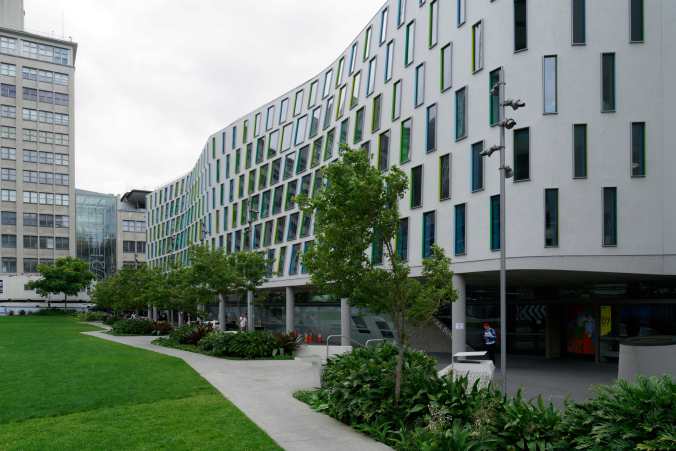


 We departed Sydney ahead of schedule, after but a few days, to a recuperative place, Palm Beach, an hour north, where the din (noise bothered him) and bustle of the city were replaced by the quietude and seaside rhythms of nature.
We departed Sydney ahead of schedule, after but a few days, to a recuperative place, Palm Beach, an hour north, where the din (noise bothered him) and bustle of the city were replaced by the quietude and seaside rhythms of nature. 
 The most obtrusive sounds came from the many birds flying around, especially in the early morning, with some (most notably, a faithful white cockatoo with a yellow crest), to our thrill, visiting our veranda. Gideon loved our place there and what constituted the thereness of there.
The most obtrusive sounds came from the many birds flying around, especially in the early morning, with some (most notably, a faithful white cockatoo with a yellow crest), to our thrill, visiting our veranda. Gideon loved our place there and what constituted the thereness of there.

 explored the magnificent Royal Botanic Gardens,
explored the magnificent Royal Botanic Gardens,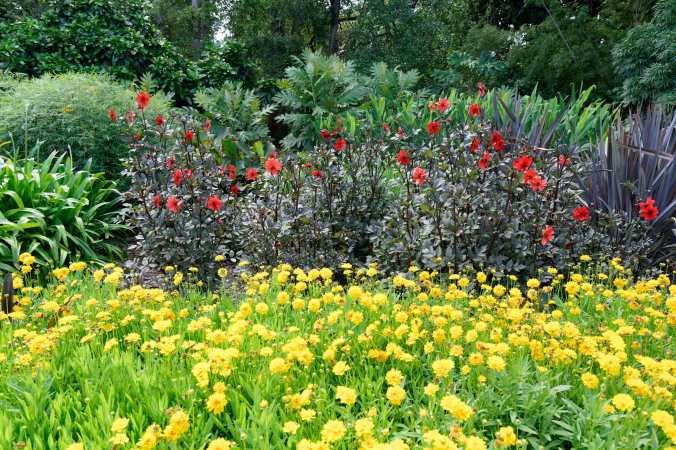
 and walked and looked, which, after all, is just about our favorite urban activity – especially when the walking and looking amply reward.
and walked and looked, which, after all, is just about our favorite urban activity – especially when the walking and looking amply reward.